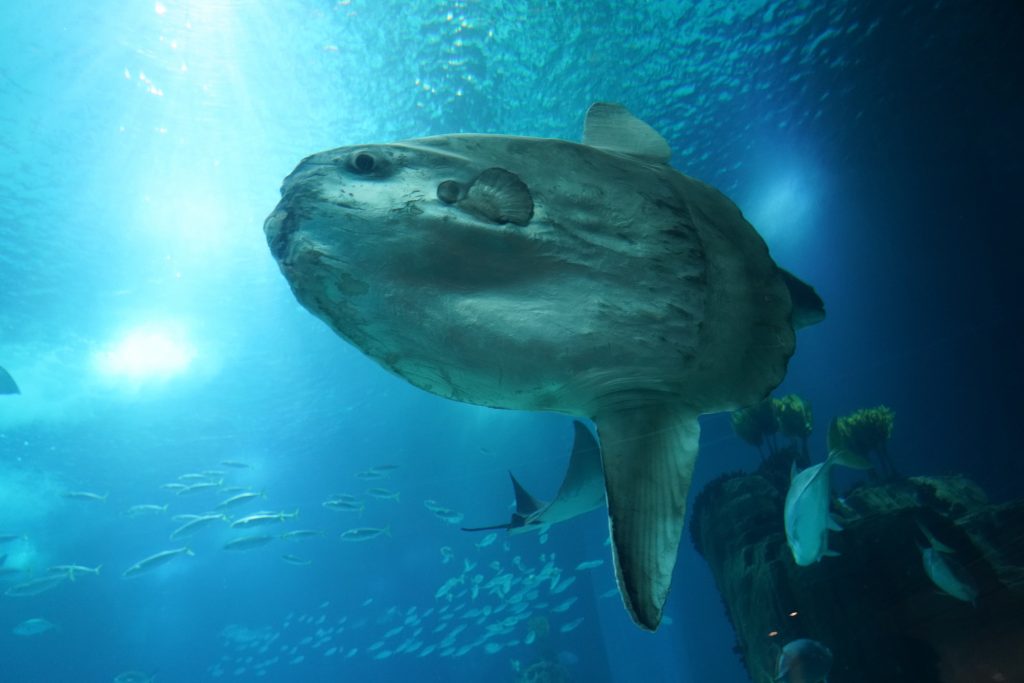‘Majestic’ 3-ton sunfish sets a new world record for largest bony fish ever discovered

Researchers stand next to the 6,000 pound giant sunfish after it was discovered floating lifeless on the ocean surface. (Image credit: Atlantic Naturalist Association) (opens in new tab)
A gigantic, 3-ton sunfish recently discovered near a Portuguese island has set a new world record for the heaviest bony fish ever recorded, according to a new study.
The scale-tipping behemoth, known as a giant sunfish or bump-head sunfish (Mola alexandrini), was discovered on Dec. 9, 2021 as it floated lifelessly off the coast of Faial Island, in the Azores — a Portuguese group of islands in the North Atlantic Ocean. Local authorities scooped up the hefty carcass and took it back to port so it could be properly studied, according to a statement from the Atlantic Naturalist Association, a non-profit conservation and research organization based on Faial Island.
Researchers carried out a necropsy on the giant sunfish and detailed the results in a new study, published Oct. 11 in the Journal of Fish Biology (opens in new tab) . The humongous fish was around 12 feet (3.6 meters) tall and around 11 feet (3.5 m) long, and it weighed a hefty 6,049 pounds (2,744 kilograms), or approximately 3 tons (2.7 metric tons). The researchers also analyzed the sunfish’s stomach contents and took samples of its DNA, according to the statement.
The dead fish is a truly “majestic specimen,” study lead author José Nuno Gomes-Pereira, a marine biologist at the Atlantic Naturalist Association, told Live Science in an email. The pictures of its corpse don’t do justice to how incredible it must have appeared in the water, he added.
Related: What’s the biggest freshwater fish in the world?
The previous world record for the heaviest bony fish was held by another giant sunfish caught in Japan in 1996, which weighed around 5,070 pounds (2,300 kg), according to Guinness World Records (opens in new tab) .
Researchers weigh the giant sunfish using mechanical winch. (Image credit: Atlantic Naturalist Association) (opens in new tab)
Sunfish are named not from their circular body shape but because they bask in the sunlight at the ocean surface, which scientists believe is how they re-heat themselves after long dives into cold, dark waters in search of food, according to the statement.
Giant sunfish have previously been misclassified as unusually large individuals of the more common ocean sunfish (Mola mola), which grow to around half the size of the recently discovered juggernaut. M. alexandrini was classified as a unique species in 2018, thanks to a study published in the journal Ichthyological Research (opens in new tab) . RELATED STORIES—Astonished fishers reel in gigantic 400-pound stingray in Cambodian river
—Bizarre translucent ‘Jell-O fish’ pulled up from icy depths in Alaska
—Scientists discover beautiful new rainbow-colored fish lurking among ‘twilight reefs’
Giant sunfish can be found across the globe, but their exact numbers are unknown.
In June, fishers in Cambodia reeled in the world’s heaviest freshwater fish, a 13-foot-long (4 m) giant freshwater stingray (Urogymnus polylepis) that weighed a hefty 661 pounds (300 kg).




